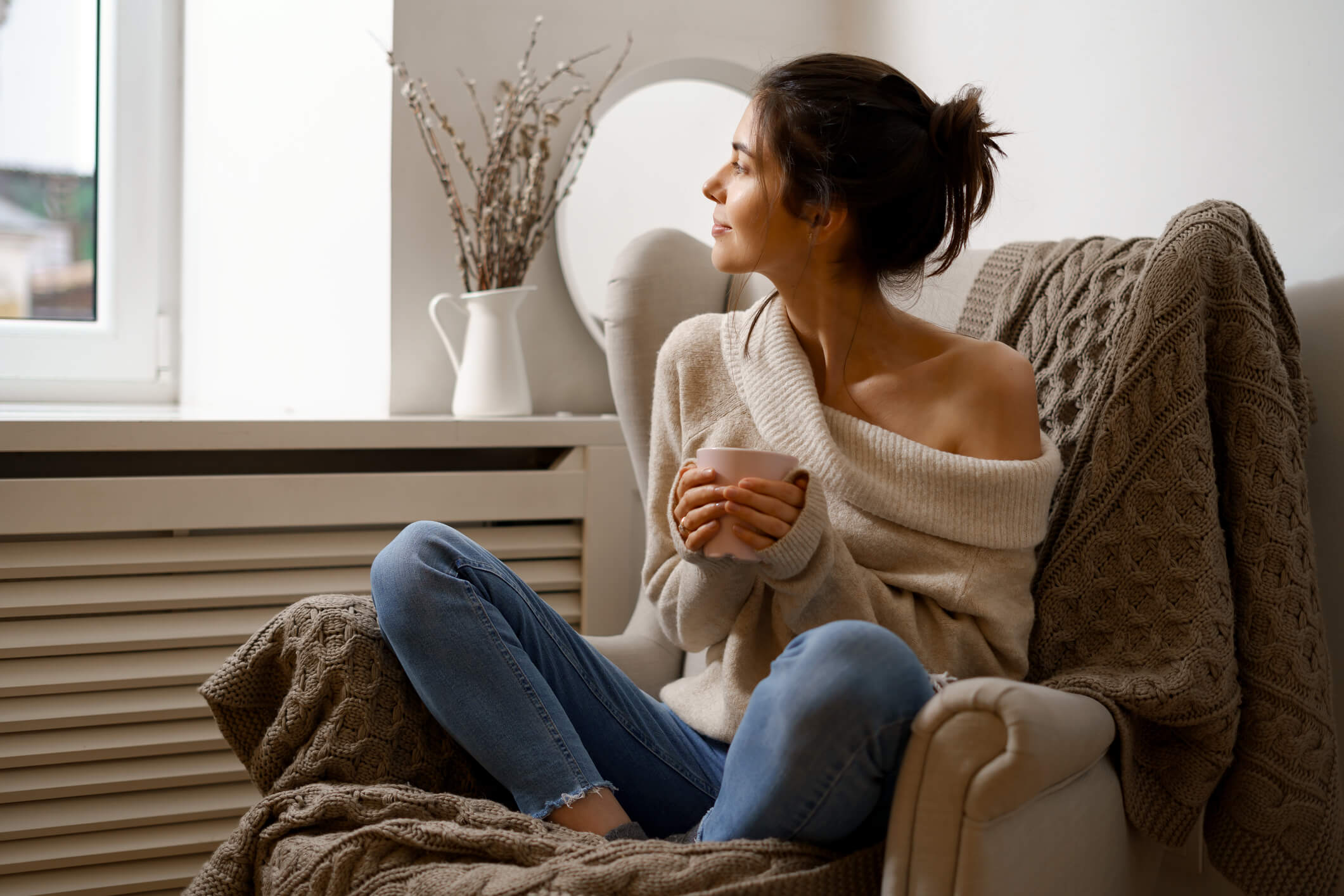What is an MVHR system?
MVHR stands for mechanical ventilation with heat recovery and describes the systems which supply fresh air to rooms in a building and remove stale air whilst reusing the heat to pre-heat the fresh air entering the building.

Why are MVHR systems becoming more popular?
Energy efficiency has been a key focus for homes in recent years both for ensuring comfort and cost reduction of utility bills. However, the increased standards for insulation and air tightness have also led to less ventilation, higher indoor humidity and lower indoor air quality. Recently, against a backdrop of changing building regulations, rising energy costs, upcoming future home standards, the covid pandemic, and news coverage of health issues associated with damp housing, greater attention is being paid to balancing energy efficiency and indoor air quality. Many methods of ventilation can lead to heat losses, however, Mechanical Ventilation with Heat Recovery (MVHR) cuts out almost all of the ventilation heat losses whilst providing the required amount of fresh air into each room as well as extracting stale, damp or polluted air where needed.
Does MVHR comply with the latest UK building regulations?
Part F of the latest UK Building Regulations deals with the means of ventilation in new builds, developments and redevelopments. Buildings which achieve an air tightness of 3m3/hr or less, are considered best practice and will require a continuously running mechanical extract system. MVHR technology can help compliance with part F when specified, designed and installed correctly. From June 2022 uplift to part L of building regulations, state that new build homes will need to produce at least 31 percent fewer carbon emissions. The use of MVHR in combination with other measures such as renewable energy sources and lower temperature heating systems (such as underfloor heating) could be an enabler for achieving this. Part E7 of the UK Building Regulations 2010 deals with soundproofing and will also be considered when designing an MVHR system. It requires that “Rooms for residential purposes shall be designed and constructed so that they provide reasonable resistance to sound from other parts of the same building”.The technical design team at Wavin can work with architects, developers and builders to help to ensure that your MVHR system is specified, designed and installed to comply with the latest UK building ventilation guidelines and achieve optimal energy efficiency.
What are the main benefits of MVHR?
• Good indoor air quality from the continuous supply of fresh air- eliminates Co2 peaks, air pollution, bad odours and poisonous Radon gas which seeps into dwellings from the ground• Control of humidity levels eliminating or reducing risk from mould, fungus and dust mites• Filters can remove allergens, pollutants, insects and smells.• Reduces the spread of germs and pathogens through the system as air is not recycled• Less noise with quiet operation and windows can remain closed• Energy savings of 30%-50% compared to naturally (uncontrolled) ventilated buildings with little energy required to operate• No drafts (in conjunction with an air-tight building)
How does MVHR work?
Heat recovery systems work by preventing heat from being lost from a build during ventilation. With conventional ventilation or air conditioning systems, warm and stale air will be expelled from the building into the atmosphere. Heat recovery helps the heating system to work more efficiently by recycling the heat from the air being removed from the building.An MVHR ventilation system with filters within the building will draw heat from outgoing air and transfer it to incoming air. Ventilation ducts are used to move air from the rooms through the heat exchanger within the MVHR unit. Incoming and outgoing air is not mixed.

Can MVHR also be used for cooling?
Whilst it can work in reverse with cool transferred from cooler inside air to help cool the incoming outside air providing some minimal cooling capacity for a short time, it is not suitable as a cooling solution on its own. The best approach in a new build would always be to design out overheating in the first place or introduce a separate cooling system for which the MVHR system could recycle the cool air.
Is MVHR suitable for use with heat pumps?
Heat recovery is ideal for combining with heat pumps for a low-carbon home. It will allow the heat pump to run at a lower temperature, improving efficiency and taking some of the strain off the system. A properly installed heat recovery system will retain and reuse over 80% of the heat that’s usually wasted, reducing the heating requirements for the home.
Do MVHR systems provide space heating?
MVHR systems are highly efficient but are primarily used for ventilation and circulating the heated air. MVHR systems do however reduce the overall heating required and so work well in combination with underfloor heating as they help to move air and disperse the heat from the floor around the building.

Does MVHR use much electricity?
Mechanical ventilation with heat recovery uses a small amount of electricity but this is insignificant to the amount of energy it recovers during its use. Overall when combined with a well-insulated building, it has the potential to reduce heating bills and provide optimum energy efficiency.
Are MVHR systems suitable for retrofit?
Typically it has been believed that MVHR systems are only suitable for insulated buildings better than 5m3/hr, however, this paper by Passive House Trust challenges that view and suggests that they are desirable for all domestic situations including both new build and retrofit.
At what stage of the build should the MVHR system be designed?
Ideally, for a new build, it is desirable to begin the design process as early as possible after planning permission. Wavin’s Indoor Climate specialists can work with architects or engineers to help to design the most efficient system and overcome and resolve any potential issues early on.

Indoor Climate Solutions at Wavin
At Wavin, our purpose is to build healthy sustainable environments. Our tailored indoor climate solutions feature our market-leading systems and products including underfloor heating, heat interface units, MVHR and single controls (interfacing with all of these technologies).
Sign Up to Our InSpec Newsletter to receive the latest News:

